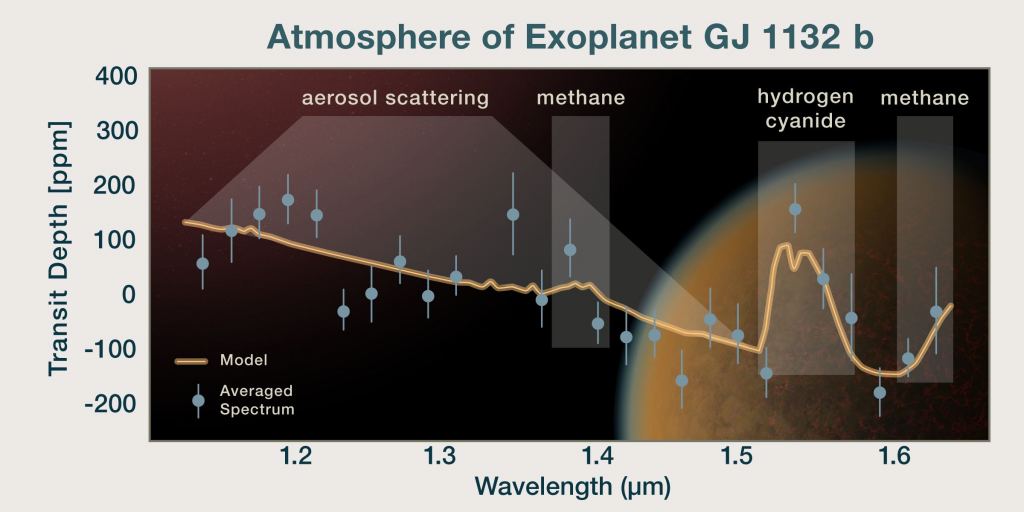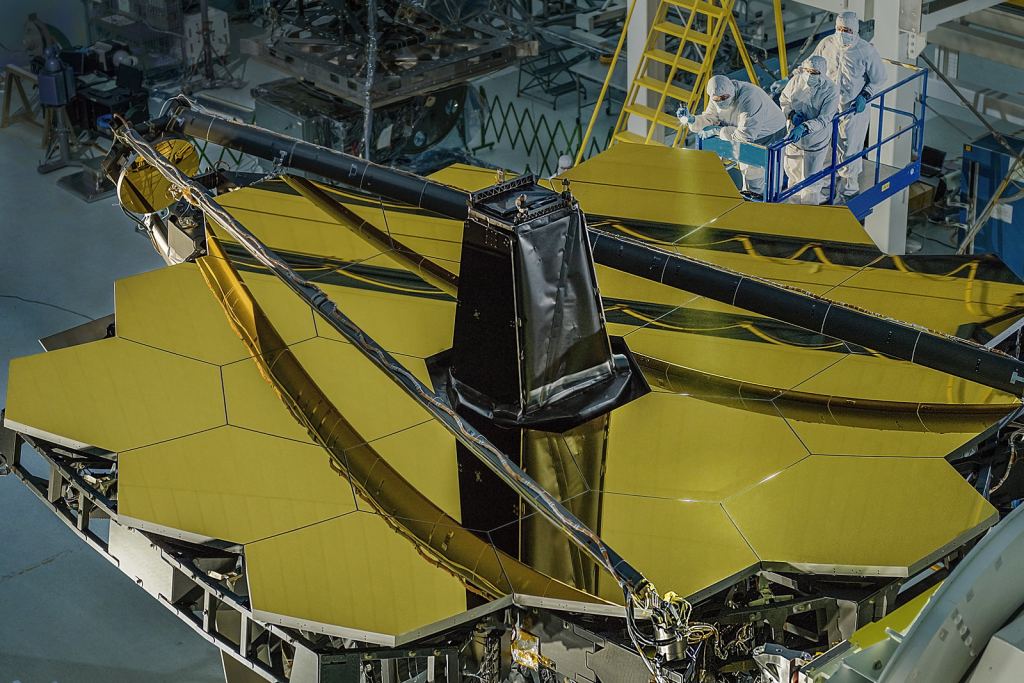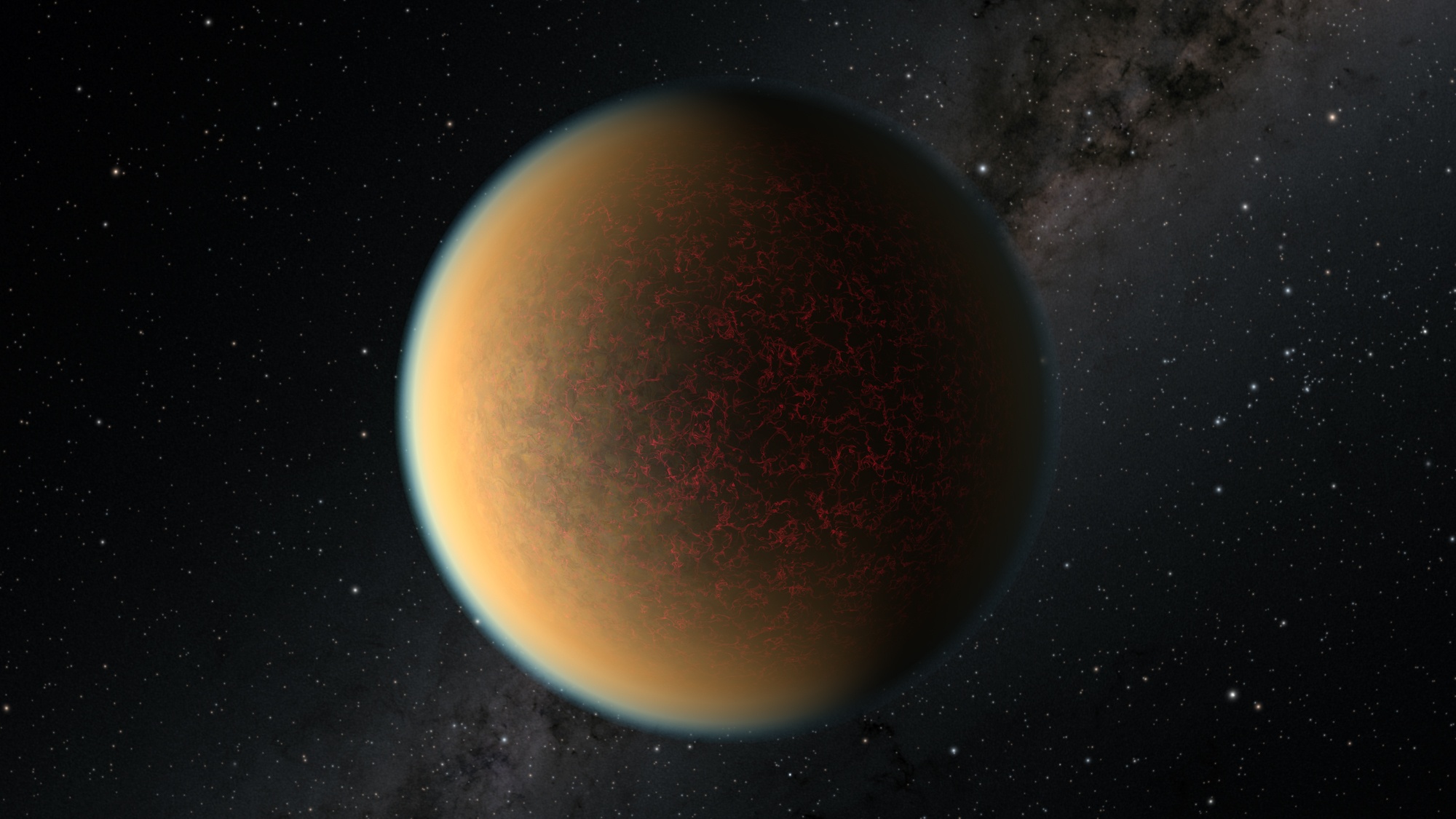A red-dwarf star called Gliese 1132 or GJ 1132 for short (astronomers and their fun nicknames!) smolders on some 41 light-years from the sun in the southern constellation Vela, just a few degrees away from the southern cross. In 2015, astronomers using the MEarth South telescope array at Cerro Tololo Inter-American Observatory (CTIO) in Chile found an Earth-sized planet orbiting extremely close to the little red star. Known as GJ 1132b, the planet orbits in a blistering 1.6 days. Its original hydrogen and helium atmosphere is thought to have long since been blown away by the powerful stellar winds experienced by the planet due to its extreme proximity to its parent. New observations from the Hubble Space Telescope revealed a surprise from the speedy exoplanet; it seems to have re-formed an atmosphere!
GJ 1132b was relatively easy to discover because it is a transiting exoplanet. This means that, from our point of view, the planet passes precisely between us and its parent star. This event causes the light detected from the star to decrease in a periodic and predictable way. This ‘transit method’ of detecting exoplanets is one of the most effective ways to detect planets around other stars.
Astronomers don’t just measure the brightness of the star, however. The spectrum of the light is also carefully measured. In the case of GJ 1132b, starlight passing through its atmosphere interacts with the various molecules within. This leaves a characteristic kind of spectral fingerprint in the light. Astronomers can infer the composition of the atmosphere just from observing light that has passed through the ‘air’ of GJ 1132b!

So what kind of air have we found in this ‘secondary atmosphere’? The spectroscopic data reveals molecular hydrogen (H2), methane (CH4), hydrogen cyanide (HCN), and an aerosol haze somewhat similar to smog. This smog is caused by numerous photochemical reactions motivated by the outrageous radiation ever-present in such tight stellar quarters. Needless to say, even though the atmospheric pressure on the surface of GJ 1132b seems to be similar to that of the Earth, this is not a suitable environment for humans!
Being so close to a star, even one as weak as a red dwarf, is an extreme environment. It is thought that the atmosphere is constantly being replenished. What could the source of atmospheric renewal on this alien world be? Due to powerful tidal forces from its proximity to a star, the planet’s interior is likely very hot and active. The crust is believed to be extremely thin, on the order of only a few hundred meters (the Earth’s crust beneath your feet is many tens of kilometers thick). With such a tenuous solid surface, the magma below is constantly releasing dissolved gases into the atmosphere. While the source of the gas is volcanic, it is interesting to note that the crust probably cannot hold up to the weight of mountainous volcanoes, and may be more akin to a cracked eggshell.
Aside from being right next to its parent star and enveloped by a poisonous atmosphere, GJ 1132b differs from the Earth in another way. The exoplanet was not always a rocky world like ours. It is believed to be the solid remnants of the core of a ‘sub-Neptune’ gas planet. The original hydrogen and helium atmosphere would have been gargantuan compared to the Earth’s wispy nitrogen and oxygen envelope.
The planet didn’t have the titanic gravity of a so-called super-Jupiter. The stellar winds battered the blistering hot world early in its life; the thick atmosphere would have eroded away into space, becoming part of the solar wind that rended it from its homeworld.
This exciting discovery of a secondary atmosphere around the rocky core of an evaporated sub-Neptune exoplanet around a nearby star makes GJ 1132b a particularly tantalizing target for the upcoming James Webb Telescope. The JWST should be capable of detecting a much more clear picture of the exoplanet’s atmosphere and various characteristics.

The discovery and exploration of exoplanets are some of the most compelling reasons why it’s reasonable to claim that we are in the midst of a true astronomical golden age. Growing up in the 1990s, exoplanets were purely the realm of speculation. Today, we are confident of the existence of thousands of exoplanets. We infer the presence of hundreds of billions of other worlds just within the Milky Way. We can even detect the composition of the atmosphere of Earth-sized planets like GJ 1132b! One can’t help but be excited to see what discoveries lie just around the corner for exoplanet explorers like the brilliant team behind this latest remarkable result.


If they find evidence for a second atmosphere (and volcanism!), it would mean the solar wind stripping model is correct. However, we may need JWST:
“Leslie Rogers, an astrophysicist at the University of Chicago who was not involved in this study, doesn’t think the evidence for a secondary atmosphere is definitive. “I think they could have better quantified the statistical significance of their results,” she says.”
[“Volcanoes could have breathed new life into a super-Earth’s atmosphere”, Astronomy]